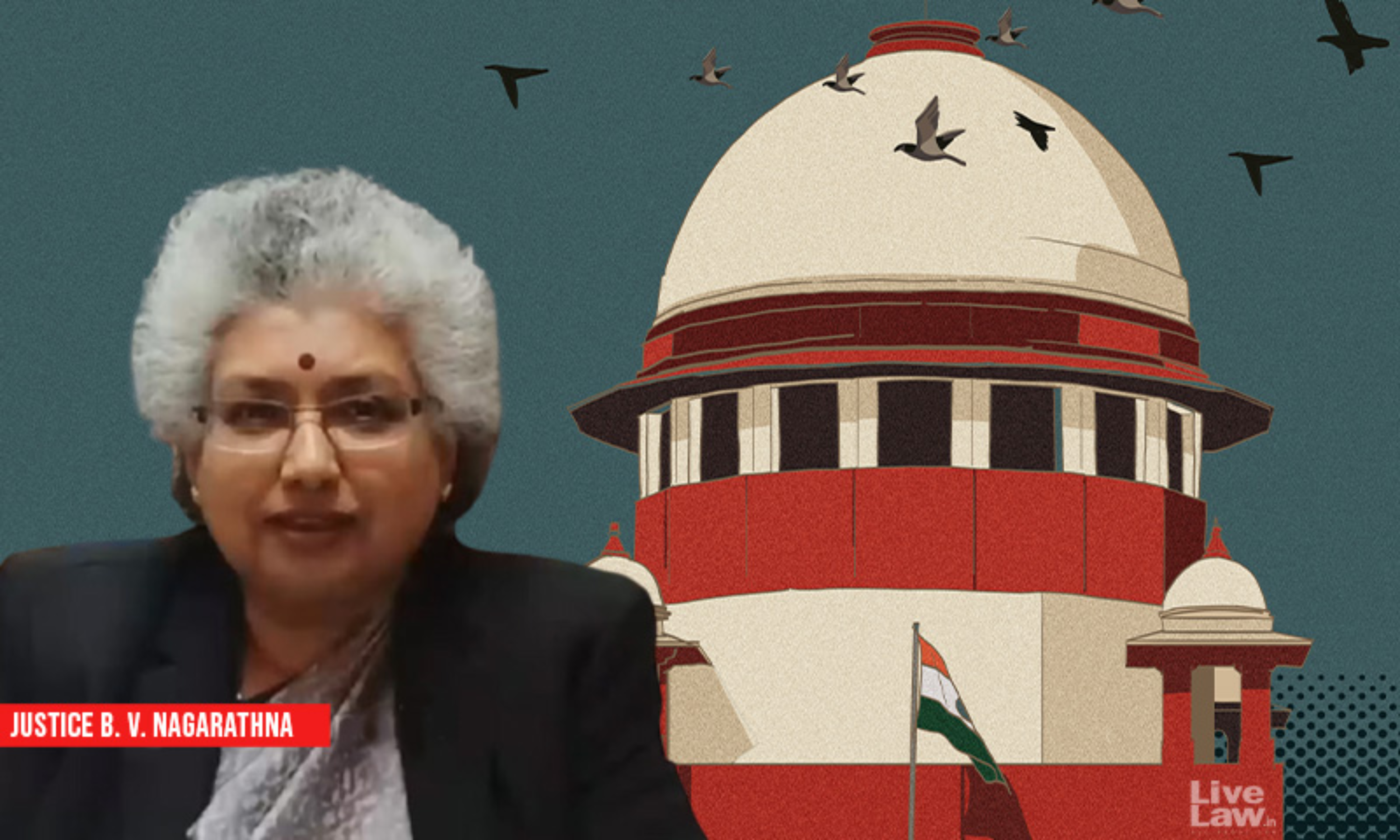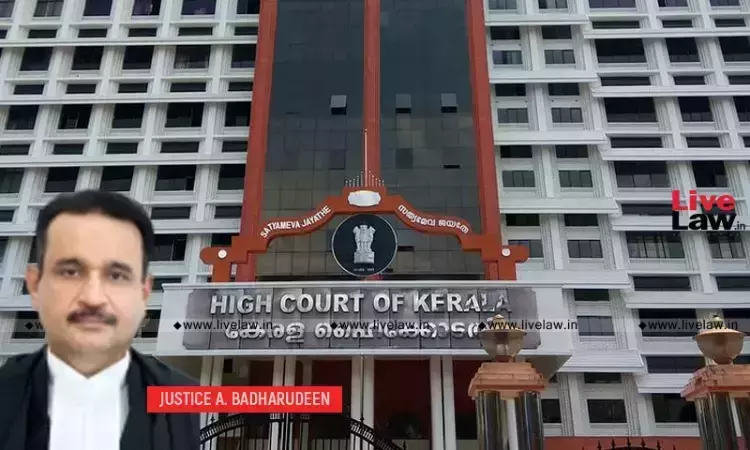Allowing States To Tax Minerals Will Lead To Unhealthy Competition Among Them, Cause Price Rise : Justice Nagarathna In Dissent

In her 193-page dissent holding royalty charged by the Parliament under Section 9 of the Mines and Minerals (Development and Regulation) Act, 1957 (MMDR Act) as tax, Justice B.V. Nagarathna has pointed out issues that could adversely impact the mineral development in the country.The Supreme Court nine-judge bench headed by Chief Justice of India, Dr D.Y. Chandrachud and comprising...
In her 193-page dissent holding royalty charged by the Parliament under Section 9 of the Mines and Minerals (Development and Regulation) Act, 1957 (MMDR Act) as tax, Justice B.V. Nagarathna has pointed out issues that could adversely impact the mineral development in the country.
The Supreme Court nine-judge bench headed by Chief Justice of India, Dr D.Y. Chandrachud and comprising Justices Hrishikesh Roy, Abhay Oka, BV Nagarathna, JB Pardiwala, Manoj Misra, Ujjal Bhuyan, SC Sharma and AG Masih, by 8:1, held that royalty charged by the Union Government under the Mines and Minerals (Development and Regulation) Act, 1957 (MMDR Act) is not tax.
The specific controversy arose out of the five judge bench in State of West Bengal vs. Kesoram Industries Ltd (2004), which held that the seven-judge bench of the Supreme Court in India Cement Ltd. vs State of Tamil Nadu (1990) incurred “typographically error” by holding “royalty is a tax” while it meant “cess on royalty is a tax”.
Justice Nagarathna has held that if royalty within the scheme of Section 9 of MMDR is not held to be a tax, the same would allow States to impose taxes on mineral rights and above payment of royalty.
The MMDR Act gives the Union legislative power relatable to Entry 54 of the Union List on regulating mines and developing minerals. Section 9 of the MMDR Act allows the Union Government to regulate royalty to be paid on mining leases in respect of any mineral removed or consumed from the leased areas at specific rates.
Two Entries are in question here. Entry 50, List II says: “Taxes on mineral rights subject to any limitation imposed by Parliament by law relating to mineral development.”
Entry 49, List which allows states to levy tax on land.
In this regard, Justice Nagarathna observed: “This would also mean that the limitation that the Parliament has made by law on the taxing power of a State explicitly stated in Entry 50 – List II would be given a go by.”
She added: “This would further imply that despite such a Parliamentary limitation, the States could pass laws imposing taxes, cesses, surcharge on cess, etc. on the basis of royalty which is in addition to payment of royalty. Further, that such levies could also be imposed under Entry 49 – List II thereby making Entry 50 – List II redundant is not acceptable.”
Justice Nagarathna pointed out that there is a constitutional basis for why Parliament regulates royalty so that uniformity can be maintained.
She added that this would lead to unhealthy competition between States for additional revenue.
“As a sequitur, this would result in mineral development in the country in an uneven and haphazard manner and increase competition between the States and engage them into what has been termed by Louise Tillin in a 'race to the bottom' in a nationally sensitive market,” Justice Nagarathna averred.
She warned that consequently, there could be an uneven increase in the cost of minerals resulting in black marketing.
Justice Nagarathna stated: “The steep increase in prices of minerals would result in a hike in prices of all industrial and other products dependent on minerals as a raw material or for other infrastructural purposes. As a result, the overall economy of the country would be affected adversely which may result in certain entities or even non-extracting States resorting to importing minerals which would hamper foreign exchange reserves of the country.”
She added: “It could also lead to a slump in mining activity in States which have mineral deposits owing to huge levies that have to be met by holders of mining licences. Further, another impact of this would be a unhealthy competition to obtain mining leases in States which have the mineral deposits and who do not wish to impose any other levy apart from royalty.”
She concluded by adding that this would ultimately lead to a breakdown of the country's federal system in the context of mineral development and exercise of mineral rights.
Background
In the present case, a batch of petitions was filed in regard to the divergent views adopted by the Supreme Court in India Cement Ltd. vs State of Tamil Nadu (1990) and State of West Bengal vs. Kesoram Industries Ltd (2004). It concerned the legislative competence of the States on mineral rights under the MMDR Act.
The MMDR Act gives the Union legislative power relatable to Entry 54 of the Union List under Schedule VII on the regulation of mines and the development of minerals. Section 9 of the MMDR Act allows the Union Government to regulate royalty to be paid on mining leases in respect of any mineral removed or consumed from the leased areas at specific rates.
In India Cement judgment, a seven-judge Bench of the Supreme Court held that “royalty is tax” and State legislatures lack the competence to levy taxes on mineral rights as it is vested with the Union under the MMDR Act. In this case, Tamil Nadu government granted a lease to India Cement for limestone and Kankar under the MMDR Act. While the royalty was fixed under the MMDR Act, the Madras Panchayat Act, 1958 (which was replaced by the Tamil Nadu Panchayats (Amendment and Miscellaneous Provisions) Act, 1964 allowed the State to levy a local cess at the rate of 45 paise charged on royalty on land revenue paid to the government.
The legislation was challenged by India Cement before the Madras High Court and its division bench. Both held that it was within the State's competence to levy cess on royalty as it was a tax on land, which was relatable to Entry 49 (taxes on land and buildings)of List II.
The Supreme Court in India Cement judgment however rejected this reasoning and held that cess was essentially on the royalty and not on land revenue. It therefore held that since royalty is a tax, the cess on royalty being a tax on royalty is beyond the State's competence. The reasoning of this decision was followed in numerous cases. In State of MP vs Mahalaxmi Fabric Mills Ltd (1995), the court examined whether the India Cement judgment incurred a “typographical error” by saying “royalty is a tax” while it meant “cess on royalty is a tax”. However, the court upheld the correctness of India Cement's judgment. This issue ultimately came before the Supreme Court five-judge bench in Kesoram Industries.
The majority in Kesoram Industries judgment held that India Cement judgment committed an “inadvertent error” because they considered “royalty as tax” while they meant “cess on royalty is tax”. However, the court concurred with India Cement judgment's reasoning. The minority held that States are denuded of their power to levy tax in terms of Entry 50 of State List which says: “taxes on minerals rights subject to any limitations imposed by Parliament by law relating to mineral development”.
In the aftermath of both judgments, many States started imposing tax under Entry 49, State List. One such was Bihar, where Bihar Coal Mining Area Development Authority (Amendment) Act, 1992 and the Bihar Mineral Area Development Authority (Land Use Tax) Rules, 1994 levied tax on land being used for mining. The High Court of Patna held the two laws unconstitutional, relying on the India Cement judgment.
The correctness of the high court's judgment was heard in the present case based on the following issue.
Other stories about the judgment can be read here.
Case Details : Mineral Area Development v. M/S Steel Authority Of India & Ors (CA N0. 4056/1999)
Citation : 2024 LiveLaw (SC) 512


![Offer Extended Till 15th April! 30% Discount On LiveLaw Academys Judicial Service Examination Preparation Course [Apply Now!] Offer Extended Till 15th April! 30% Discount On LiveLaw Academys Judicial Service Examination Preparation Course [Apply Now!]](https://www.livelaw.in/h-upload/2025/04/12/500x300_595581-lla-early-bird-750-x-450.webp)
